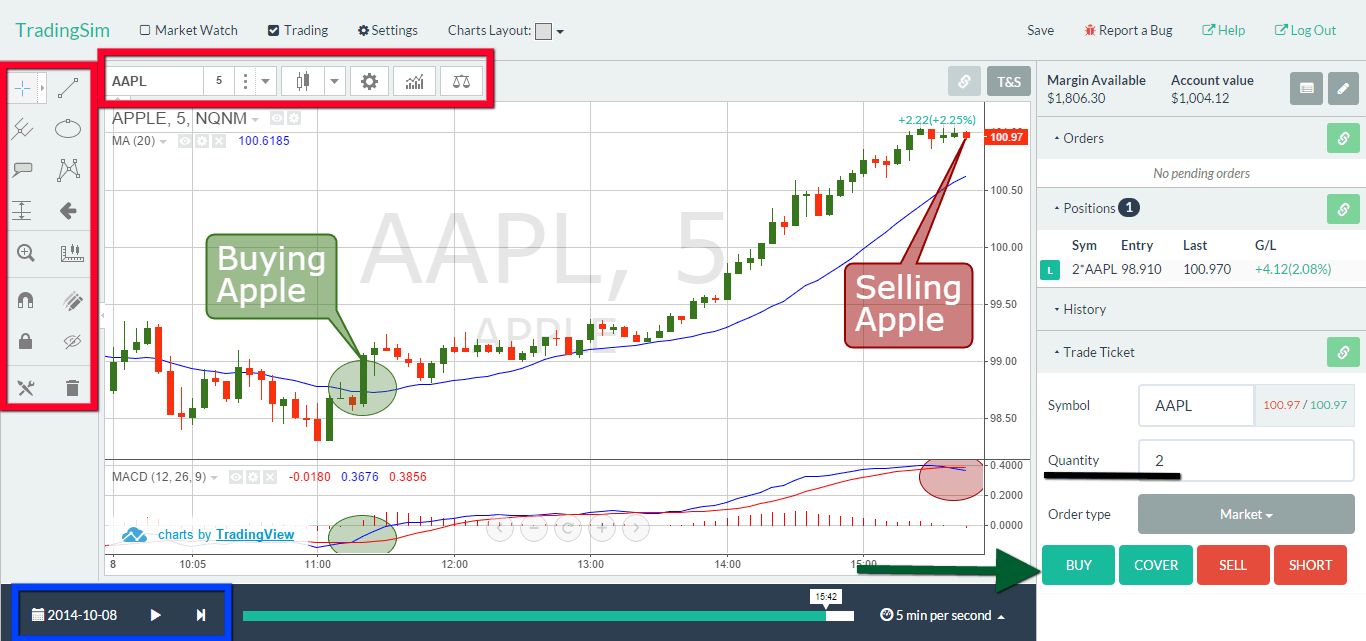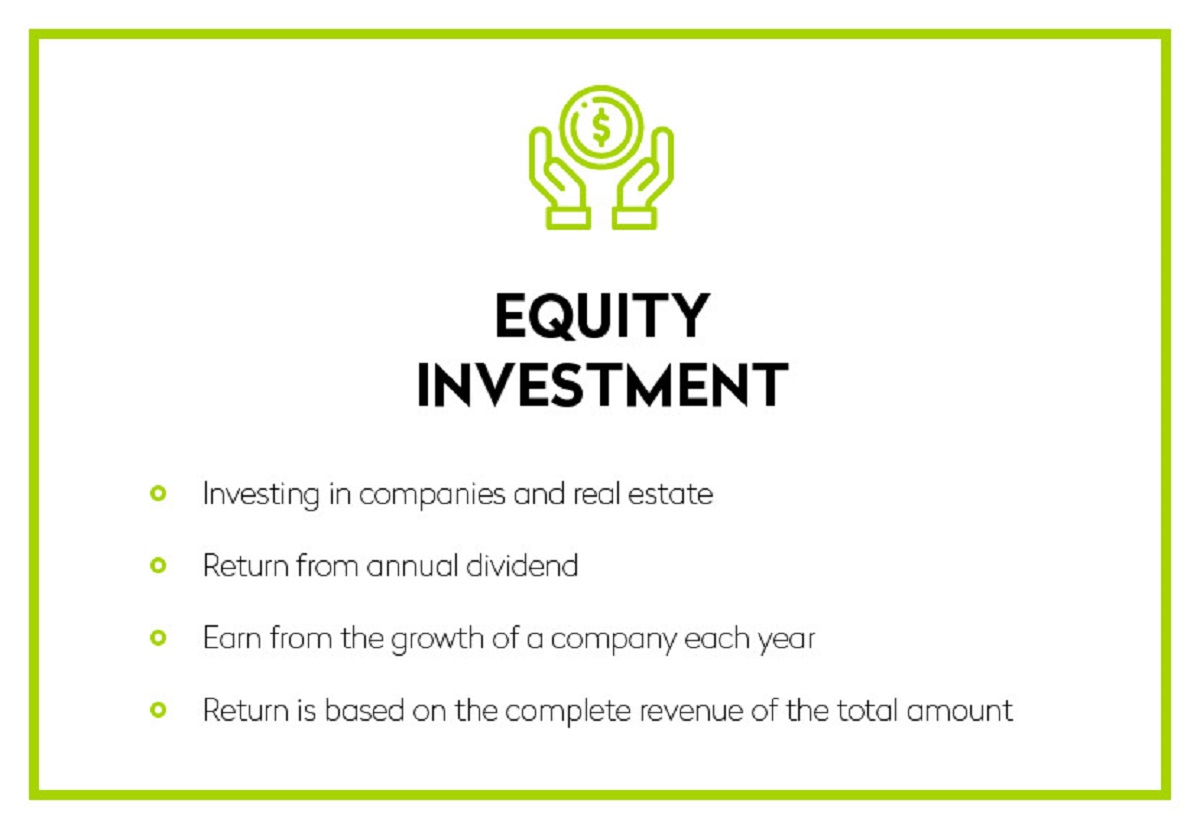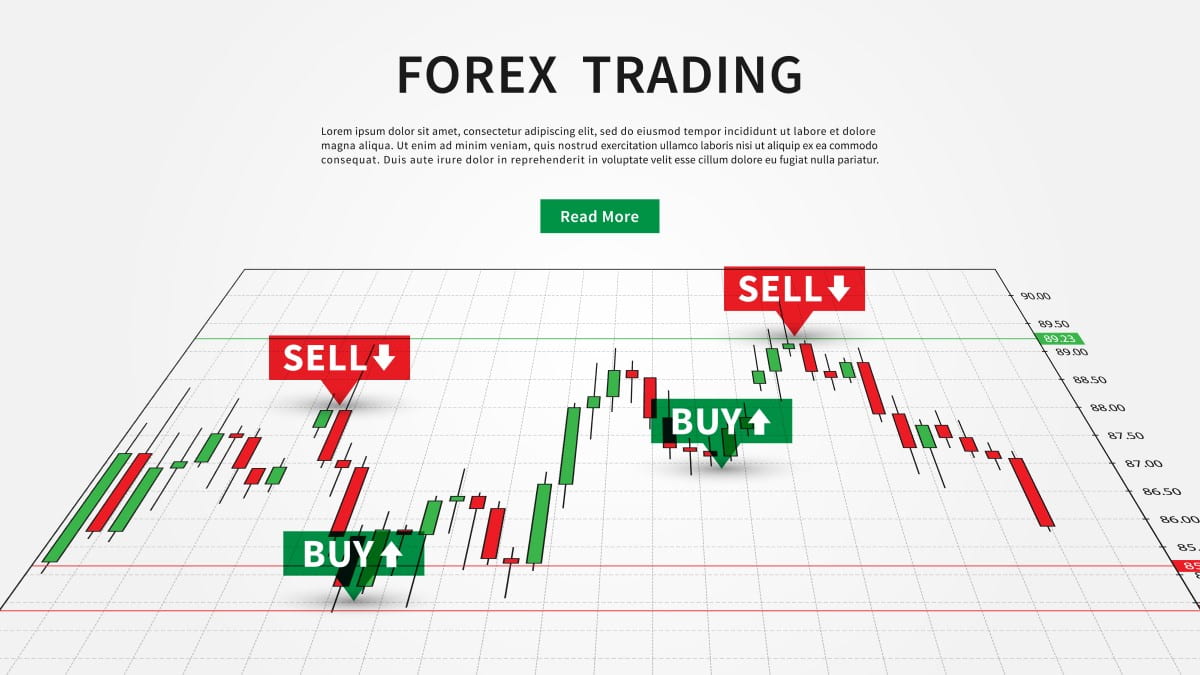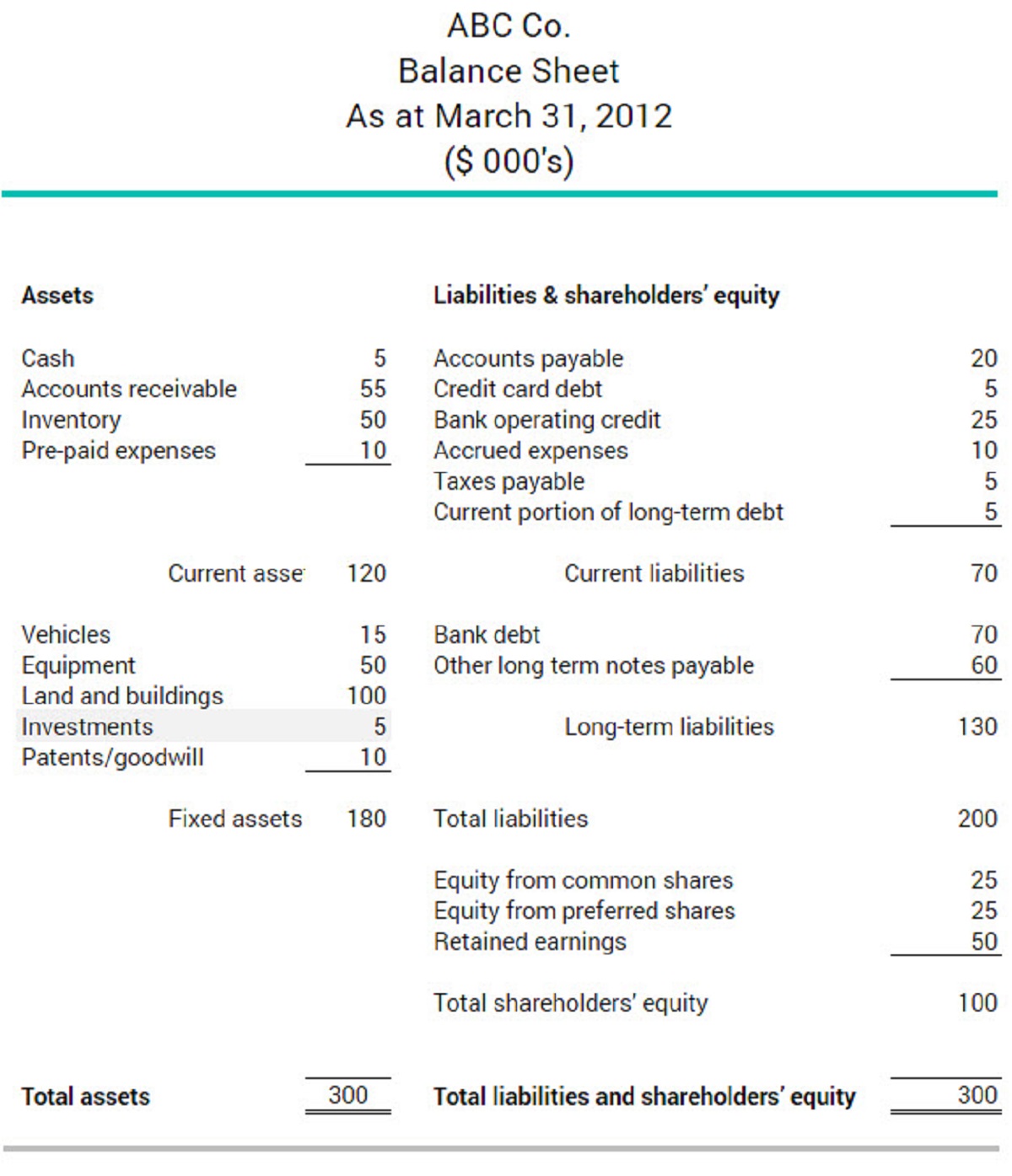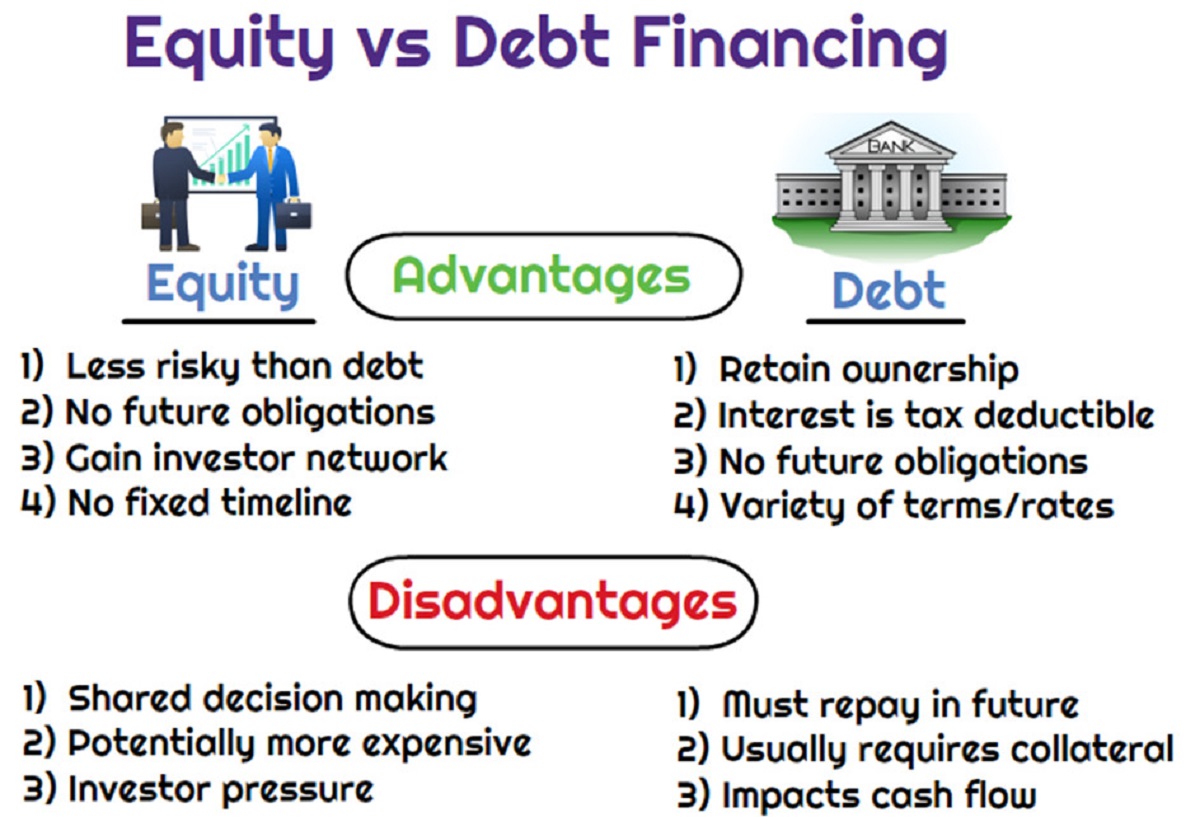Introduction
Welcome to the exciting world of equity trading! In this article, we will explore the fundamentals of equity trading, including what it is, how it works, and the various players and strategies involved. Whether you’re a seasoned investor or just starting out, understanding equity trading is essential for making informed financial decisions and potentially earning significant returns.
Equity trading refers to the buying and selling of company shares on the stock market. It is a dynamic and fast-paced market where investors aim to profit from the fluctuations in share prices. Unlike other forms of investment, such as bonds or mutual funds, equity trading provides the opportunity to become a partial owner, or shareholder, of a company.
Equity trading operates on the principle of supply and demand. When the demand for a particular stock outweighs the supply, the price tends to rise, presenting an opportunity for traders to sell their shares at a profit. Conversely, when the supply exceeds the demand, the stock price tends to decline, allowing traders to buy shares at a lower price in anticipation of future gains.
Equity trading can be done through various platforms, including stock exchanges and online brokerage accounts. These platforms provide access to a wide range of stocks, allowing traders to diversify their portfolios and potentially mitigate risk. It’s important to note that while equity trading can be highly lucrative, it also carries a level of risk and requires a thorough understanding of market trends, analysis, and risk management strategies.
In the following sections, we will delve deeper into the mechanics of equity trading, explore the different types of traders, and discuss the key players and strategies that drive the market. We will also cover the risks and rewards associated with equity trading, as well as the factors that can impact stock prices. Lastly, we will guide you through the steps to get started in equity trading, so you can embark on your own investment journey with confidence.
Definition of Equity Trading
Equity trading, also known as stock trading or share trading, refers to the buying and selling of company shares on the stock market. It is a key component of the financial market, where investors trade ownership stakes in publicly listed companies. When individuals or institutions acquire shares, they become shareholders and have the opportunity to profit from the company’s success.
Equity trading operates on the principle of supply and demand. The value of a company’s stock is driven by various factors, including its financial performance, industry trends, investor sentiment, and overall market conditions. When the demand for a particular stock outweighs its supply, the price tends to rise. Conversely, when the supply exceeds demand, the stock price tends to decline.
Equity trading can be done on different platforms, including traditional stock exchanges and online brokerage accounts. Stock exchanges serve as centralized marketplaces where buyers and sellers can trade shares in a regulated environment. Online brokerages offer individuals the convenience of trading stocks from the comfort of their own homes or offices.
There are two primary forms of equity trading: primary market and secondary market. In the primary market, also known as the initial public offering (IPO) market, companies issue new shares to raise capital. Investors can purchase these shares directly from the company at the offering price. The secondary market, on the other hand, involves the trading of existing shares between investors. This is where most equity trading takes place, as investors buy and sell shares based on their assessment of a company’s value and growth potential.
Equity trading offers individuals and institutions the opportunity to participate in the ownership and growth of companies across various sectors and industries. By trading stocks, investors can potentially earn profits through capital appreciation (selling shares at a higher price than the purchase price) or through dividends (company profits distributed to shareholders).
It is important to note that equity trading comes with risks. Stock prices can be volatile and influenced by various economic, political, and market-related factors. Therefore, it is essential for equity traders to conduct thorough research, perform due diligence, and develop sound trading strategies to maximize their chances of success and mitigate potential losses.
In the next sections, we will explore how equity trading works, the different types of equity traders, key players in the market, common trading strategies, and the risks and rewards associated with this type of investment.
How Equity Trading Works
Equity trading involves a series of steps and processes that allow investors to buy and sell shares in publicly traded companies. Understanding how equity trading works can help investors make informed decisions and navigate the complexities of the stock market.
The first step in equity trading is to open a brokerage account. A brokerage account serves as the intermediary between the investor and the stock market. It allows individuals to place buy and sell orders for stocks, monitor their portfolio, and access research and market analysis tools.
Once the brokerage account is set up, investors can start researching and analyzing stocks to identify potential investment opportunities. This involves evaluating a company’s financial health, examining its industry and competitive landscape, analyzing its growth prospects, and keeping up with relevant news and market trends.
After conducting thorough research, investors can place buy orders for the stocks they wish to acquire. The order specifies the desired quantity of shares and the price at which they are willing to buy. There are different types of orders, such as market orders (executed at the best available price) and limit orders (executed only if the stock reaches a specified price or better).
Once the buy order is executed, the investor becomes a shareholder of the company. The shares are held in the investor’s brokerage account, and the ownership is represented by electronic records. Investors can choose to hold the shares for the long term, aiming to benefit from dividends and potential capital appreciation, or they can engage in more active trading strategies to take advantage of short-term market movements.
When investors decide to sell their shares, they can place sell orders through their brokerage account. The sell order specifies the quantity of shares and the price at which they are willing to sell. If there is a willing buyer at the specified price, the sell order is executed, and the shares are transferred to the buyer’s account.
It is important to note that stock prices are subject to market forces and can fluctuate throughout the trading day. The value of shares can be influenced by a variety of factors, including company earnings, economic indicators, geopolitical events, and market sentiment.
Additionally, equity trading can involve various trading strategies, such as day trading, swing trading, and value investing. Each strategy has its own approach and time horizon, catering to different risk tolerances and investment objectives.
In summary, equity trading involves opening a brokerage account, conducting research and analysis, placing buy and sell orders, and actively managing one’s portfolio. It is a dynamic and ever-changing market where investors aim to profit from the fluctuations in stock prices. By being knowledgeable and staying informed, investors can navigate equity trading with confidence and potentially achieve their financial goals.
Types of Equity Traders
In the world of equity trading, there are various types of traders who engage in different strategies and approaches to the stock market. Understanding the different types of equity traders can provide insights into the dynamics of the market and the motivations behind their trading activities.
1. Individual Retail Traders: These are individual investors who trade stocks using their personal brokerage accounts. They make their own investment decisions based on their research and analysis. Individual retail traders range from beginners who are just starting out to seasoned investors who have developed their own trading strategies.
2. Institutional Traders: Institutional traders represent large organizations such as pension funds, hedge funds, and mutual funds. They trade on behalf of the organization and manage substantial amounts of capital. Institutional traders often have access to advanced trading tools and research resources, allowing them to make well-informed investment decisions.
3. Day Traders: Day traders are individuals who execute multiple trades within a single trading day. They aim to profit from short-term price fluctuations and typically close their positions by the end of the day. Day traders rely on technical analysis, charts, and trading indicators to identify entry and exit points.
4. Swing Traders: Swing traders hold positions for a few days to several weeks, aiming to capture larger price movements. They analyze price patterns, trends, and market sentiment to identify potential trades. Swing traders often use a combination of technical analysis and fundamental analysis to make their trading decisions.
5. Long-Term Investors: Long-term investors hold stocks for an extended period, often years or even decades. They focus on the fundamentals of a company, such as its financials, growth prospects, and management team. Long-term investors aim to participate in the overall growth of the company and often reinvest dividends to maximize their returns.
6. Algorithmic Traders: Algorithmic traders use computer algorithms and high-speed trading systems to execute trades. These traders leverage complex algorithms to analyze vast amounts of data and identify trading opportunities. Algorithmic trading can be highly automated and execute trades at a speed and frequency that may not be achievable by human traders.
7. Market Makers: Market makers are entities, often large financial institutions, that provide liquidity to the market. They constantly quote bid and ask prices and stand ready to buy or sell shares at those prices. Market makers help facilitate smooth and efficient trading by ensuring there is always a counterparty available for trades.
It is important to note that these types of equity traders are not mutually exclusive. Some traders may employ multiple strategies depending on market conditions and their investment goals. Additionally, advancements in technology have blurred the lines between different types of traders, as retail traders now have access to sophisticated trading tools and institutional investors may incorporate algorithmic trading strategies.
Understanding the different types of equity traders can provide valuable insights into market dynamics and the various approaches traders utilize to navigate the stock market. Each type of trader brings their own unique perspectives and strategies, contributing to the overall liquidity and efficiency of the equity trading ecosystem.
Key Players in Equity Trading
Equity trading involves various key players who play vital roles in the functioning of the stock market. These players contribute to the liquidity, efficiency, and regulation of equity trading. Understanding their roles can provide valuable insights into the dynamics of the market.
1. Stock Exchanges: Stock exchanges are the primary marketplaces where equity trading takes place. They provide a centralized platform for buyers and sellers to trade shares. Stock exchanges, such as the New York Stock Exchange (NYSE) and NASDAQ, ensure fair and transparent trading by enforcing regulations and listing requirements.
2. Brokers and Online Trading Platforms: Brokers act as intermediaries between investors and the stock exchanges. They execute buy and sell orders on behalf of their clients. Traditional brokers provide personalized advice and recommendations, while online trading platforms offer self-directed trading with access to a wide range of stocks.
3. Market Makers: Market makers are usually large financial institutions that facilitate trading by providing liquidity to the market. They continuously quote bid and ask prices and stand ready to buy or sell shares at those prices, ensuring there is always a counterparty available for trades. Market makers play a crucial role in maintaining market depth and reducing bid-ask spreads.
4. Institutional Investors: Institutional investors, such as pension funds, mutual funds, and hedge funds, are significant players in equity trading. They manage large amounts of capital and trade on behalf of their clients or members. Institutional investors bring liquidity to the market and often influence stock prices through their buying or selling activities.
5. Individual Retail Investors: Individual retail investors, like everyday individuals, trade stocks using their personal brokerage accounts. They contribute to the liquidity of the market and make up a significant portion of the overall trading volume. Retail investors range from occasional traders to active day or swing traders, shaping the market dynamics with their buying and selling decisions.
6. Regulatory Bodies: Regulatory bodies, such as the Securities and Exchange Commission (SEC) in the United States, oversee and regulate equity trading. They ensure fair and transparent trading practices, monitor compliance with securities laws, and protect investors from fraudulent activities. Regulatory bodies play a crucial role in maintaining the integrity and stability of the equity trading ecosystem.
7. Financial News and Research Providers: Financial news outlets and research firms provide real-time market news, analysis, and insights to investors. They play a critical role in keeping market participants informed about economic trends, company earnings, industry developments, and other relevant information that can influence trading decisions.
Each of these key players in equity trading has a specific role that contributes to the functioning and regulation of the market. They ensure order and transparency, provide liquidity, and offer access to information and trading platforms, enabling investors to participate in equity trading effectively.
By understanding the roles and interactions of these key players, investors can gain a deeper appreciation for the dynamics of equity trading and make more informed decisions when it comes to buying and selling stocks.
Common Strategies in Equity Trading
Equity trading offers a wide range of strategies for investors to potentially profit from stock market fluctuations. Successful traders employ various approaches based on their investment objectives, risk tolerance, and market conditions. Understanding these common strategies can help investors navigate the complexities of equity trading.
1. Technical Analysis: Technical analysis involves analyzing historical price and volume data to identify patterns and trends in stock prices. Traders using this strategy rely on charts, indicators, and other graphical tools to make trading decisions. Technical analysis aims to predict future price movements based on past patterns and market psychology.
2. Fundamental Analysis: Fundamental analysis involves analyzing a company’s financial health, earnings, growth prospects, and industry trends. Traders using this strategy assess the intrinsic value of a stock to determine whether it is undervalued or overvalued. Fundamental analysis relies on quantitative data, such as financial statements, and qualitative factors, such as management competence and competitive advantages.
3. Value Investing: Value investors seek stocks that are trading below their intrinsic value. They look for companies with strong fundamentals but whose stock prices do not fully reflect their worth. Value investors focus on long-term investment horizons and aim to capitalize on market inefficiencies and undervalued opportunities.
4. Momentum Trading: Momentum traders take advantage of short-term price trends and market momentum. They identify stocks that are showing upward or downward momentum and seek to ride the trend. Momentum traders often use technical indicators, such as moving averages and relative strength index (RSI), to identify entry and exit points in rapidly moving markets.
5. Swing Trading: Swing traders hold positions for a few days to weeks and aim to profit from short-term price swings. They look for stocks that show predictable price patterns and volatility. Swing traders may use a combination of technical and fundamental analysis to time their trades and capture potential price movements within a defined period.
6. Day Trading: Day traders execute multiple trades within a single trading day. They aim to profit from short-term price fluctuations and typically close all positions before the market closes. Day traders employ various strategies, including scalping (aiming for small, quick profits), news-based trading, and high-frequency trading techniques.
7. Arbitrage: Arbitrage traders seek to profit from price discrepancies in different markets or exchanges. They simultaneously buy a stock at a lower price in one market and sell it at a higher price in another market, taking advantage of temporary inefficiencies in pricing. Arbitrage strategies require quick execution and minimal risk exposure.
It’s important to note that these strategies are not mutually exclusive, and many traders incorporate multiple strategies depending on market conditions. Additionally, risk management is an integral part of successful equity trading. Traders should manage their positions, set stop-loss orders, and diversify their portfolios to mitigate potential losses.
By understanding and implementing these common equity trading strategies, investors can develop their own trading approach, adapt to different market conditions, and increase their chances of success in the stock market.
Risks and Rewards in Equity Trading
Equity trading offers both potential rewards and inherent risks. Understanding these risks and rewards is essential for investors to make informed decisions and manage their expectations in the stock market.
Rewards:
1. Potential Capital Appreciation: One of the main attractions of equity trading is the potential for capital appreciation. If the value of a stock increases, investors can sell their shares at a higher price than the purchase price, earning a profit on their investment.
2. Dividend Income: Many publicly listed companies distribute a portion of their profits to shareholders in the form of dividends. Investors who hold dividend-paying stocks have the opportunity to earn passive income in addition to potential capital gains.
3. Ownership and Voting Rights: Equity trading allows investors to become partial owners of companies. Along with stock ownership comes the right to vote on certain corporate decisions, such as board member elections and major corporate actions.
Risks:
1. Market Volatility: The stock market is known for its volatility, where stock prices can fluctuate rapidly. Price movements can be influenced by various factors, including economic conditions, geopolitical events, and market sentiment. This volatility can lead to potential losses for equity traders.
2. Market Uncertainty: The stock market can be unpredictable, with unexpected events causing significant changes in stock prices. Factors such as company-specific news, regulatory changes, or macroeconomic trends can introduce uncertainty and impact investment decisions.
3. Loss of Capital: Equity trading carries the risk of losing the entire capital invested in a stock. If the price of a stock declines, investors may sell their shares at a lower price than the purchase price, resulting in a loss. This risk highlights the importance of diversification and risk management in a well-rounded trading strategy.
4. Liquidity Risk: Some stocks may have limited trading volumes, meaning it can be challenging to find buyers or sellers for these stocks, particularly during volatile market conditions. Lack of liquidity can result in difficulties exiting or entering a position at desired prices.
5. Regulatory and Legal Risks: Equity traders need to be aware of the regulatory framework governing the stock market. Violations of securities laws or trading regulations can lead to legal consequences or loss of investment capital. Staying informed about regulatory changes and adhering to industry best practices is crucial to mitigating such risks.
It is important for investors to educate themselves about these risks and rewards and develop a sound investment strategy. Conducting thorough research, diversifying the portfolio, setting realistic expectations, and implementing risk management techniques can help navigate the potential pitfalls of equity trading.
It is also worth noting that past performance is not indicative of future results. The stock market is influenced by numerous factors, so it is essential to carefully analyze investment opportunities and make informed decisions based on a combination of research, analysis, and risk tolerance.
Factors Affecting Equity Trading
Equity trading is influenced by a multitude of factors that can impact stock prices and market dynamics. Understanding these factors is integral to making informed investment decisions and navigating the complexities of the stock market.
1. Economic Conditions: The overall state of the economy, including factors such as GDP growth, interest rates, inflation, and employment levels, can significantly impact equity trading. Positive economic indicators often lead to increased investor confidence and potential growth in stock prices, while economic downturns can result in market volatility and lower stock prices.
2. Company Performance: The financial performance of a company, including its revenue, earnings, and profitability, directly influences the value of its stock. Strong performance and positive earnings surprises can lead to increased investor interest and potential price appreciation, while weak performance and disappointing earnings can cause stock prices to decline.
3. Industry and Sector Trends: Market trends and developments within specific industries or sectors can impact equity trading. Factors such as technological advancements, regulatory changes, emerging market opportunities, and consumer trends can influence investor sentiment and investor demand for stocks within a particular industry or sector.
4. Investor Sentiment: Investor sentiment, which refers to the overall mood and outlook of market participants, can have a significant impact on equity trading. Positive sentiment can drive demand for stocks, leading to price increases, whereas negative sentiment can result in selling pressure and potential price declines. Investor sentiment is influenced by factors such as economic news, geopolitical events, and market speculation.
5. Macroeconomic and Geopolitical Factors: Macroeconomic factors, including government policies, global economic trends, and geopolitical events, can impact equity trading. Changes in fiscal and monetary policies, trade agreements, political instability, and international conflicts can create volatility in the stock market and affect investor confidence and stock prices.
6. News and Market Sentiment: News events and market sentiment can drive short-term price movements in equity trading. Positive news, such as mergers and acquisitions, product launches, or favorable earnings reports, can boost investor enthusiasm and lead to a surge in stock prices. Conversely, negative news, such as scandals, litigation, or economic downturns, can cause stock prices to decline.
7. Technical Factors and Market Psychology: Technical factors, including chart patterns, support and resistance levels, trading volumes, and market indicators, can influence equity trading. Technical analysis tools and strategies are employed by traders to identify trends and potential entry and exit points. Additionally, market psychology and investor behavior, such as fear, greed, and herd mentality, can impact stock prices and market movements.
It’s important to note that these factors do not act in isolation but often interact and influence each other in complex ways. Equity traders should stay informed about these factors, continually monitor market developments, and conduct thorough research and analysis to make informed investment decisions.
By understanding the factors affecting equity trading, investors can develop a comprehensive view of the market, anticipate potential opportunities and risks, and adjust their investment strategies accordingly.
Steps to Get Started in Equity Trading
Getting started in equity trading can be an exciting and potentially lucrative venture. However, it’s important to approach it with careful preparation and a solid understanding of the market. Here are the key steps to embark on your equity trading journey:
1. Educate Yourself: Begin by educating yourself about the fundamentals of equity trading. Understand how the stock market works, the different types of orders, and the various trading strategies. Familiarize yourself with financial concepts, company fundamentals, and market analysis techniques. There are numerous online resources, books, and courses available to help you develop a strong foundation in equity trading.
2. Set Your Goals and Risk Tolerance: Clarify your investment goals and determine your risk tolerance. Are you looking for short-term gains or long-term wealth accumulation? Consider factors such as your financial situation, time horizon, and comfort with potential losses. Setting specific goals and understanding your risk tolerance will guide your trading decisions and help you develop a suitable trading strategy.
3. Open a Brokerage Account: Choose a reputable brokerage firm and open an account. Ensure the brokerage offers user-friendly trading platforms, access to research tools, and competitive fees. Evaluate factors such as customer support, educational resources, and the broker’s reputation in the industry. Thoroughly review the terms and conditions, account types, and fee structures before opening an account.
4. Develop a Trading Plan: Create a trading plan that outlines your trading approach, including the types of stocks you will focus on, the amount of capital you are willing to invest, and the risk management strategies you will implement. Identify your preferred trading style and time frame (e.g., swing trading, long-term investing) and establish criteria for entering and exiting trades.
5. Conduct Research and Analysis: Perform thorough research and analysis before making any trading decisions. Stay updated on company news, financial reports, and industry trends. Utilize fundamental analysis by evaluating a company’s financial health, earnings growth, and competitive advantages. Incorporate technical analysis by analyzing price charts, indicators, and patterns. Develop a systematic approach to evaluate potential trades.
6. Practice with a Virtual Trading Account: Consider practicing your trading strategies using a virtual trading account or a demo platform provided by your brokerage. Virtual trading allows you to execute trades with virtual money, providing an opportunity to test your strategies, understand platform functionalities, and gain confidence without risking real capital.
7. Start Trading: Once you have understood the basics, conducted thorough research, and practiced with virtual trading, you can begin executing trades with real money. Start small and gradually increase your position sizes as you gain experience and confidence. Monitor your trades closely, maintain discipline, and continuously learn from both successful and unsuccessful trades.
8. Keep Learning and Adapting: Equity trading is a dynamic and ever-changing field. Stay updated on market trends, regulatory changes, and evolving strategies. Attend webinars, read books, and engage with online communities to expand your knowledge. Learn from both successful and unsuccessful trades and continually refine your trading plan as you gain insights and experience.
Becoming a successful equity trader requires dedication, discipline, and continuous learning. By following these steps and remaining committed to ongoing education and improvement, you can build a solid foundation in equity trading and increase your chances of success in the market.
Conclusion
Equity trading can be an exciting and potentially rewarding endeavor for investors looking to participate in the stock market. By understanding the fundamentals, strategies, and key players in equity trading, individuals can make more informed decisions when buying and selling stocks. It is crucial to educate oneself about the intricacies of the market, stay updated on market trends and news, and develop a solid trading plan based on individual goals and risk tolerance.
Throughout this article, we have explored the definition of equity trading, how it works, and the various types of traders involved. We have also discussed the key players in equity trading, the common strategies employed by traders, and the risks and rewards associated with this type of investment. Additionally, we touched upon the factors influencing equity trading, such as economic conditions, company performance, investor sentiment, and market volatility.
To get started in equity trading, aspiring traders should take the necessary steps, which include educating themselves, setting clear goals, opening a brokerage account, developing a trading plan, conducting thorough research and analysis, and continuously learning and adapting to market dynamics. By following these steps and staying disciplined, equity traders can navigate the stock market with more confidence and potentially achieve their financial objectives.
However, it’s important to note that equity trading involves risks, and past performance is not indicative of future results. Traders should be aware of the potential for financial losses and adjust their strategies and risk management techniques accordingly. It is always recommended to consult with a financial advisor or professional before making any investment decisions.
Overall, equity trading offers the opportunity for individuals to participate in the growth and success of publicly traded companies. With a solid understanding of the market and a well-defined trading approach, investors can harness the potential rewards and navigate the risks, making their mark in the world of equity trading.







